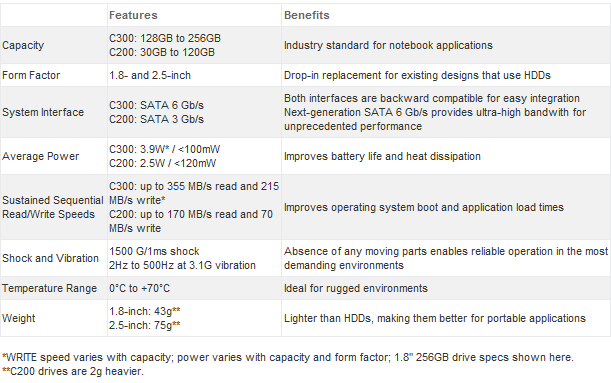Micron RealSSD C300 SATA III SSD Review
Looking at current solid state drive market, it's easy to draw some parallels with the early days of 3D on the PC. When 3D graphics cards first hit the scene (before the term GPU was coined), there were only a few major players, i.e. 3dfx, Tseng Labs, S3, etc. As the technology was more accepted by consumers, however, numerous other manufactures, like NVIDIA, ATI, 3DLabs, Matrox, Rendition, Number 9 and many others, wanted a piece of the pie as well and they all entered the fray with 3D processors of their own. Over time, the dust settled, the cream rose to the top, and we were left with only a select few GPU manufactures. We're sure you've all heard the stories by now.
At this point in time, the SSD market is akin to the 3D chipset boom. Whereas only a couple of companies laid the foundation when solid state drives first arrived, now we have a broad range of options to choose from. Intel, Samsung, JMicron, Indilinx, and Sandforce, among others we're sure we've missed, all make SSD controllers. Today we're going to show you yet another new SSD based on a new controller from a long-time player in PC storage, Marvell.
The Marvell 88SS9174-BJP2 controller at the heart of the Micron RealSSD C300 we're going to show you today affords the drive a feature not yet offered on any competing product--SATA III support. And the controller in combination with some of Micron's own NAND flash, culminate in a drive that offered some of the best performance we have seen from any solid state drive to date. Take a moment to check out the specs below and then strap yourself in as we show you more of the drive itself and then move on to the all-important benchmarks.

|
|
|

As the specifications show, the Micron RealSSD C300 offers a SATA 6GB/s interface (backwards compatible to SATA 3GB of course) with a 256MB capacity, and sustained sequential read and write performance of 355MB/s and 215MB/s, respectively. Those specs alone currently put the drive in a category all by itself, but great specifications don't always translate to great real-world performance. Then again, sometimes they do...






